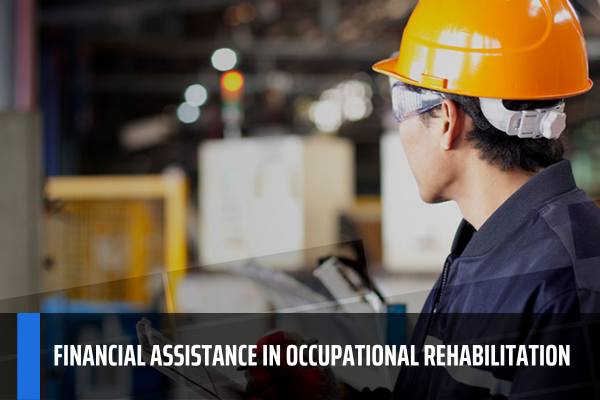What percentage of whole person impairment is required for employees to receive financial support for occupational rehabilitation in Vietnam?
- What percentage of whole person impairment is required for employees to receive financial support for occupational rehabilitation in Vietnam?
- What are the cases where an employee is entitled to undergo medical re-assessment of decreased work capacity in Vietnam?
- What percentage of whole person impairment is required for employees to receive lump-sum benefit in Vietnam?
What percentage of whole person impairment is required for employees to receive financial support for occupational rehabilitation in Vietnam?
In Article 24 of Decree 88/2020/ND-CP, there are regulations on Conditions for financial assistance in occupational rehabilitation:
Conditions for financial assistance in occupational rehabilitation
An employee shall be provided with financial assistance in occupational rehabilitation as prescribed in Point b Clause 2 Article 56 of the Law on Occupational Safety and Health if the following conditions are satisfied:
1. A health facility has recommended occupational rehabilitation;
2. He/she suffers from WPI of at least 31% as a result of the occupational accident or occupational disease;
3. He/she is participating in occupational accident and occupational disease insurance in accordance with the law at the time of having the occupational accident or occupational disease.
Thus, an employee shall be provided with financial assistance in occupational rehabilitation if he/she suffers from WPI of at least 31% as a result of the occupational accident or occupational disease. At the same time, two additional conditions must be met:
- A health facility has recommended occupational rehabilitation;
- He/she is participating in occupational accident and occupational disease insurance in accordance with the law at the time of having the occupational accident or occupational disease.

What percentage of whole person impairment is required for employees to receive financial support for occupational rehabilitation in Vietnam?
What are the cases where an employee is entitled to undergo medical re-assessment of decreased work capacity in Vietnam?
According to Article 47 of the Law on occupational safety and hygiene 2015, regulations on medical assessment of decreased work capacity are specifically as follows:
Medical assessment of decreased work capacity
1. An employee involving in an occupational accident or suffering from an occupational disease is entitled to undergo medical assessment or medical re-assessment of decreased work capacity if he/she is in one of the following cases:
a) Their health condition has become stable after treatment of the first time injury or disease but there are sequelae affecting their health;
b) Their health condition has become stable after treatment of the relapse injury or disease;
c) If their health condition cannot become stable after treatment of the injury or disease as prescribed by the Minister of Health, the employee is entitled to undergo a medical assessment before or during the treatment process.
2. An employee is entitled to thorough assessment of their decreased work capacity when he/she is in one of the following cases:
a) He/she both suffers from an occupational accident and suffers from an occupational disease;
b) He/she suffers from multiple occupational accidents;
c) He/she suffers from multiple occupational diseases.
3. The employee prescribed in Point b Clause 1 of this Article shall be entitled to undergo medical re-assessment of occupational accidents or occupational diseases after 24 months, from the date on which the employee receives the preceding conclusion of decreased work capacity rate made by the Medical Examination Council; in case the employee’s health decline considerably, the period of time for re-assessment shall be shortened as prescribed by the Minister of Health.
Thus, employee is entitled to undergo medical re-assessment of decreased work capacity in the following cases:
- Their health condition has become stable after treatment of the first time injury or disease but there are sequelae affecting their health;
- Their health condition has become stable after treatment of the relapse injury or disease;
- If their health condition cannot become stable after treatment of the injury or disease as prescribed by the Minister of Health, the employee is entitled to undergo a medical assessment before or during the treatment process.
What percentage of whole person impairment is required for employees to receive lump-sum benefit in Vietnam?
Pursuant to Article 48 of the Law on occupational safety and hygiene 2015, regulations on lump-sum benefit are as follows:
Lump-sum benefit
1. Each employee suffering a working capacity decrease of between 5% and 30% is entitled to a lump-sum benefit.
2. Lump-sum benefit levels:
a) Each employee suffering a 5% working capacity decrease is entitled to a benefit which is five times more than the statutory pay rate, a half of the statutory pay rate shall be added to each additional 1% working capacity decrease;
b) Apart from the benefit level prescribed in Point a of this Clause, each employee is entitled to an additional benefit determined according to the payment period of the insurance premiums which equals half of the salary of the month preceding the leave taken for treatment on which social insurance premiums are based, for a period of social insurance premium payment of one year or less, and shall then be added with 0.3 month’s salary of the month preceding the leave taken for treatment on which social insurance premiums are based, for each additional year of social insurance premium payment; if the employee suffers from the occupational accident in the first month he/she pays premium or discontinued payment of premium until returning to work, the salary of such month shall be the basis for determination of that benefit.
...
Thus, each employee suffering a working capacity decrease of between 5% and 30% is entitled to a lump-sum benefit.
LawNet